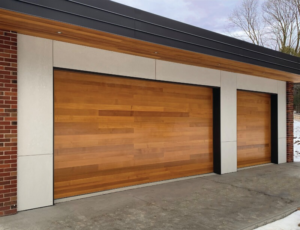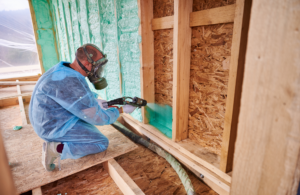The SureColor V1070 is designed to bring the power of UV printing to a wide range of businesses, including promotional product distributors, e-commerce companies, and sign shops. It features a space-saving design and is easy to operate and maintain.
Printers supplied in Australia and New Zealand have a limited warranty augmented by on-site, parts, and labor cover under Epson Cloud Solution PORT1. Conditions apply. Click Epson Uv Printer to learn more.

Unlike inkjet printers, UV flatbed printing uses LED lamps to print onto objects. These LEDs produce an optimal curing effect by emitting minimal heat while also providing the necessary light intensity. Moreover, they can quickly turn on and off without the need for long lamp warm-up times. This means that the machines can start work immediately, boosting productivity and overall efficiency.
Choosing the right UV printer is essential for your business. This is because different models are available in the market with varying features. In order to choose the right one for your needs, consider the amount of volume you are likely to produce and the size of the objects you plan on printing. For example, if you want to print taller objects, you should consider a model that has a larger bed. This will allow you to print more in a shorter period of time and help you increase your profits.
Another important factor to consider is the machine stability. If your UV printer is not stable, it may be susceptible to damages and other problems. This will affect your ability to complete orders on time, and it can negatively impact the reputation of your company. To avoid this, you should look for a brand with a good reputation for product quality and after-sales support.
The best UV printers feature a sturdy construction and high-quality components to ensure that they will last a long time. They are also designed with an efficient cooling system to keep the components at a safe temperature. Moreover, the printers have a durable printed circuit board that regulates electrical signals and ensures proper functionality.
In addition, the best UV flatbed printers have ergonomic design features that make them easy to operate. They have a small footprint that saves space and can be easily placed next to other equipment in your office. They also have LED lamps that instantly follow the print heads and cure the ink drops, resulting in a dry sheet as it exits the machine.
The best UV flatbed printers also have a RoHS compliant chassis and power supply. This is an important safety feature because it prevents worker exposure to toxic chemicals and other substances. The RoHS directive prohibits the use of ten hazardous substances, including mercury, lead, cadmium, hexavalent chromium, polybrominated diphenyl ethers (PBDE), and dibutyl phthalate (DBP). This ensures that your equipment is safe to use for human contact.
UV Ink
Unlike conventional printing inks that soak into the substrate, UV inks sit on top of the printed material and cure instantly. As a result, these inks are less likely to cause damage and are more resistant to scratching, marking and scuffing. They are also free of volatile organic compounds (VOC), so they do not release harmful chemicals into the air like traditional solvent-based inks.
This makes them safer for the environment and your employees. Moreover, they have a higher adhesion to the substrate, so they can be used to print on hard surfaces. They can also be used to create specialty effects and finishes, including spot varnishes, raised textures, metallic inks and more. These qualities make UV inks ideal for a wide range of decorative applications, from packaging and marketing materials to interior decor.
As a result, PSPs can now produce a wider range of products for their customers and expand into new markets and niche applications. For example, a PSP can now offer personalized products such as mugs, glasses, bags and accessories. This type of printing is becoming increasingly popular, as it is an effective marketing tool for businesses that want to increase brand visibility and improve customer loyalty.
Another advantage of UV-curable inks is that they do not need to dry before they can be used on a rigid or flexible substrate. This helps to reduce production time and maximize productivity. Lastly, these inks can be used on a wide variety of materials, including glass, foam based or composite materials, and aluminium.
The Epson SureColor V7000 is a 4′ x 8′ UV flatbed printer that features a vibrant 10-color UltraChrome UV ink set with opaque white and eye-catching varnish. Its advanced micropiezo print heads use piezo actuators to convert mechanical stress into electric fields that eject precise volumes of ink at varying sizes and distances. These prints are accurate, crisp and durable. The printer is also compatible with Epson Cloud Solution PORT, which offers intuitive real-time remote monitoring of printer status and production efficiency tracking and reporting.
The SC-V1000 is a small, versatile flatbed UV printer that’s perfect for photography shops, custom item manufacturers, and tourist attractions. Its high-quality, versatile design can be customized to match a company’s brand image and offers fast, easy maintenance.
UV Substrate
Using a UV printer, you can make just about anything from ceramic tiles and tabletops to customized kitchen items like cutting boards. You can even print photos and graphics on mugs and key rings. Artists can use this technology to diversify their product lines and create unique gifts for their clients.
The UV printing process produces durable, vibrant prints that resist fading and washing. It also allows for the printing of ADA-compliant raised characters and braille signs with a single device. It’s a cost-effective alternative to traditional screen and pad printing techniques. In addition, it produces high-quality and colorful images that look more appealing than standard offset prints.
UV flatbed printing is an excellent solution for anyone looking to add value to their products or services. It is used in a variety of applications, including industrial and commercial signage, point-of-sale displays, and retail gift items. It is also ideal for e-commerce retailers, as it offers the ability to customize products with high-quality, colorful designs.
In addition to providing quality prints, UV printing can help you save money on overhead and increase your profit margins. This is because it allows you to print on a wider range of materials than conventional printing processes. Furthermore, it is fast and can produce large quantities of prints in a short amount of time.
For example, if you need to create a large number of brochures for your business, you can quickly and easily do so with a UV flatbed printer. This can help you save both time and money, which is important in the competitive landscape of e-commerce.
In addition, you can use a UV flatbed printer to create custom shirts and other apparel for your customers. This can be an excellent way to generate more revenue and build a loyal customer base. Additionally, it is a great way to promote your business and get people talking about it. Whether you’re an established large-format printing company or just starting out, a UV flatbed printer can help you expand your product offerings and increase your profits.
UV Printer Reviews
Adding a UV printer to your printing arsenal can be an excellent way to expand your business’ capabilities and boost revenue. This technology offers a number of benefits, including the ability to print directly onto curved or cylindrical objects. However, it is important to consider the various options before choosing a model. These printers are available in a variety of configurations, including flatbed, roll-to-roll, and conveyorized. To choose the right one for your needs, consider three key factors: size, rotary capability, and print head channels.
The most popular type of UV printer is the flatbed model. This machine uses UV-curable inks to produce high-quality, colorful prints that are durable and resistant to moisture. These inks are also eco-friendly and contain fewer volatile organic compounds (VOCs) than traditional inks. The accelerated curing process also cuts turnaround times significantly, which can save you time and money in the long run.
This model can be used to print on a variety of surfaces, including glass and plastics. It can also be used to create textured patterns on wood and metal objects. The results produced by this type of printer are very appealing and can be sold to a wide range of clients.
Another type of UV printer is the rotary UV printer, which is designed to print on cylindrical or curved objects. This type of printer is ideal for businesses that need to print on items such as mugs, pens, bottles, and candles. The rotary UV printer can also be used to add barcodes and description words to packaging.
The Epson SureColor V1070 is a new, high-performance desktop UV printer that delivers amazing image quality and productivity. It uses a new, 10-color UltraChrome UV ink set that includes opaque white ink and eye-catching gloss or matte varnish ink. The resulting prints have low graininess and smooth gradations, making them perfect for logos and brand graphics. The printer is also highly productive, enabling you to print more jobs in less time. The SureColor V1070 is available now for just under $8,500 through authorized resellers.


